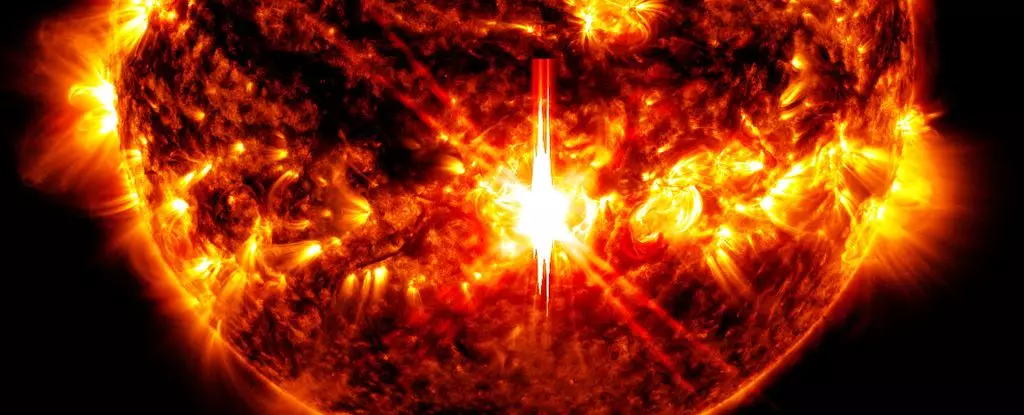On October 3, 2023, the astronomical community was abuzz with excitement as the Sun produced its most potent flare in nearly seven years, measuring an impressive X9.0. This event marked a significant moment not just for solar physicists but also for anyone interested in space phenomena, as it was accompanied by a halo coronal mass ejection (CME) directed straight toward Earth. This flare is the second notable X-class outburst from an active sunspot region—AR 3842—in October 2024, coming on the heels of a previous X7.1 flare just two days earlier. Such powerful solar events remind us of the dynamic nature of our Sun and the intricate mechanisms that govern its behavior.
Solar flares are bursts of electromagnetic radiation that result from the complex interplay of the Sun’s magnetic fields. Occurring frequently during the peak of the Sun’s 11-year activity cycle, these flares can range in intensity from minor eruptions that barely affect Earth to massive outbursts that can disrupt technology and create stunning auroral displays in the skies. The X9.0 flare of October 3 joins the ranks of the most powerful flares recorded, below only a handful of others, most notably the X11.88 flare observed in 2017.
What’s particularly fascinating about this recent flare is its origin from a sunspot region classified as Beta-Gamma-Delta. The classification reflects the magnetically tangled and intense environments of these regions. The sunspot AR 3842, with its complex magnetic structure, allows for a high likelihood of intense solar activity. Understanding these underlying mechanics can provide insights into why certain regions are more prone to stronger flares, enhancing our ability to predict future solar activity.
While we often gaze in awe at the beauty of solar phenomena, the implications of such powerful solar flares can be serious. High-frequency radio communication systems on Earth can experience brief but significant interruptions due to the intense radiation released during flares. Even more concerning are the CMEs that often accompany these flares. A CME releases billions of tons of charged particles and magnetic fields into space, and when directed toward Earth, they can interact with our planet’s magnetosphere, potentially leading to geomagnetic storms.
Historically, such storms have resulted in notable disruptions. The fluctuations can affect electrical grids, necessitating voltage corrections, and can also increase drag on satellites, leading to course corrections. Disruptions in GPS systems can occur, impacting navigation and positioning services that many take for granted in today’s world.
Despite the potential for disruption, the flares and their accompanying CMEs also offer some of the most breathtaking natural spectacles: the auroras. As solar particles collide with Earth’s atmosphere, they ionize atmospheric gases, creating spectacular displays of light aka auroras. What’s enticing about the latest X-class flares is that they are expected to enhance auroral activity, potentially visible as far south as 50 degrees latitude. The NOAA has predicted several days of optimal aurora viewing conditions following the recent events, inviting skywatchers to revel in the celestial beauty above.
It is crucial to capitalize on such opportunities; witnessing an aurora can be a transformative experience, evoking a sense of wonder about the universe we inhabit. Digital photography enthusiasts and nature lovers alike often try capturing images of these ethereal light displays, effectively blending science with art.
Looking ahead, astronomers and scientists are focusing on understanding the implications of these recent solar events and what they might mean for future activity. The announcement of a halo CME hitting Earth raises questions about the potential for subsequent flares and geomagnetic storms in the coming days.
The scientific community will undoubtedly be monitoring AR 3842 closely as it continues to demonstrate intense solar activity. Moreover, the study of solar flares could help improve predictive models, allowing us to prepare more effectively for adverse events that may impact not only technological systems but also human safety in space travel.
The dramatic solar activity we are witnessing serves as a reminder of the Sun’s power and the need for ongoing scientific exploration and understanding. This occurrence offers not just opportunities for research but also chances for all of us to engage with the wonders of our universe, both through scientific inquiry and the simple pleasure of watching the night sky dance with colors produced by solar flares above.


Leave a Reply